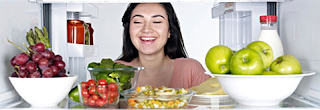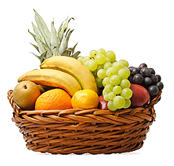 |
| Source: Academy of Nutrition and Dietetics |
According to the latest research published in the Journal of the Academy of Nutrition and Dietetics, it most certainly can. This could be a good thing or a not-so-good thing.
In this article, researchers reviewed and analyzed data from 15 studies and found that if participants were provided information about the eating habits of other people, it influenced their food choices and intake. For example, if the participants in the studies were given information indicating that others in their social world were making low-calorie or high-calorie food choices, this information significantly increased the likelihood that the participants made similar choices.
Click on this audiocast to learn more about the study:
“It appears that in some contexts, conforming to informational eating norms may be a way of reinforcing identity to a social group, which is in line with social identity theory,” explains lead investigator Eric Robinson, PhD, of the University of Liverpool. “By this social identity account, if a person’s sense of self is strongly guided by their identity as a member of their local community and that community is perceived to eat healthily, then that person would be hypothesized to eat healthily in order to maintain a consistent sense of social identity.”
How can you apply the results of these studies to help you make more positive, healthy changes in your diet? Before you sit down to eat, order a meal at a restaurant, or grab a snack from a vending machine, consider these latest survey findings about how others are making healthy diet changes. Then, apply the tips provided below:
- Over 70 percent of American adults surveyed stated that they are trying to consume smaller portions as a way to improve their diet. Tip: Downsize the circumference of your dinner plate by at least 2 inches. The smaller the plate, the less food you will heap on it and eat. You don’t need to buy an entire new dinnerware set. Just find one, inexpensive smaller plate and eat all of your meals off it.
- The majority of Americans surveyed (88 percent) have made efforts to eat more fruits and vegetables daily. Tip: See the above tip and cover half your plate with fruits and veggies at ALL meals.
- Six out of ten Americans surveyed are trying to limit or avoid sodium entirely and consider the sodium content of packaged foods and beverages when shopping. Tip: Since fresh fruits and veggies are naturally low in sodium, doing the above two tips could dramatically cut the sodium in your diet. When buying frozen, canned or packaged foods, comparison shop. Read the label and purchase the variety with the least amount of added salt.
- Over 45 percent of Americans surveyed are eating more fish. Tip: While it is recommended that you eat at least two fish meals, particularly fatty fish, weekly (at least 8 ounces total per week), you don’t have to always consume it at dinner. Add canned salmon to your salad or combine it with a light mayo sandwiched between two slices of whole wheat bread at lunch.
If you have a topic you would like me to cover on my blog, please email me at: salge@bu.edu
Follow Joan on Twitter at: joansalgeblake













